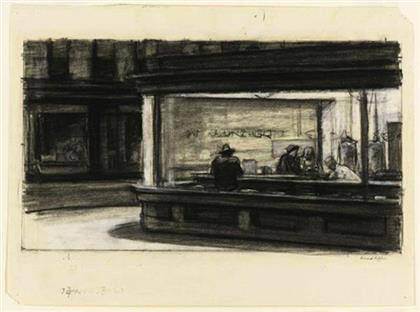
Wayne Thiebaud
Salad, Sandwiches and Dessert, 1960.
Lent by the Sheldon Museum of Art, University of Nebraska
Lincoln, NAA – Thomas C. Woods Memorial. Art
© Wayne Thiebaud/Licensed by VAGA, New York, NY.

William J. McCloskey
Wrapped Oranges, 1889.
Amon Carter Museum of American Art, Fort Worth, Texas
Acquisition in memory of Katrine Deakins
Art and Appetite – Art Institute of Chicago The Art Institute of Chicago invites visitors to feast their eyes on the rich tradition of food in American art with the major exhibition ‘Art and Appetite: American Painting, Culture, and Cuisine’. November 12, 2013 through January 27, 2014.]]>
Source: Art Institute of Chicago
“Art and Appetite” takes a new approach to American paintings of food, contextualizing them to rediscover the meanings they held for their makers and their public. Despite the prevalence of such works, research has rarely focused on the cultural significance of the objects depicted in these paintings, nor has it addressed how these paintings embodied changing ideals throughout the nation’s history. Thematically and chronologically organized, “Art and Appetite” breaks with the traditional histories of the genre to explore how it illuminates American attitudes about patriotism and politics, identity and gender, progress and history, and production and consumption.
From the earliest years of the United States, American artists such as Raphaelle Peale used still-life painting to express cultural, political, and social values, elevating the genre to a significant aesthetic language. Later, in antebellum America, depictions of food highlighted abundance, increasing wealth, and changing social roles, while elegant decanters of wine and spirits in still-life paintings by John F. Francis reflected the prevalence of drinking and the mid-century debates over temperance. During the Gilded Age, despite the implications of the term, American artists moved away from excess and eschewed high Victorian opulence in favor of painting the simple meal. Many artists, such as William Harnett or De Scott Evans, also used food pictures to serve up biting political commentary that addressed the social and economic transformations of the 1880s and 1890s.
In the 20th century new ways of eating and socializing began to change depictions of food in art. Restaurant dining —still novel in the United States in the late 19th century— became a common subject in the works of William Glackens, John Sloan, and others. Café and cocktail culture, described in the work of Stuart Davis and Gerald Murphy, became increasingly important even as Prohibition banned the consumption of alcohol. Modernist artists employed food in their radically new explorations of pictorial form, all the while challenging national ideals of family and home. Finally, during the 1950s and 1960s, Pop artists, among them Andy Warhol and Claes Oldenburg, addressed the ways in which mass production and consumption dramatically altered the American experience of food. Hamburgers, fries, and cakes were depicted as objects of mass -produced comestibles without human referent. Artists employed new means to explore the visual power of advertising, the standardization of factory-produced meals, and the commercialization of American appetites.
Related content
American Landscape Painting at Grand Rapids (exhibition, 2013)
Follow us on:


